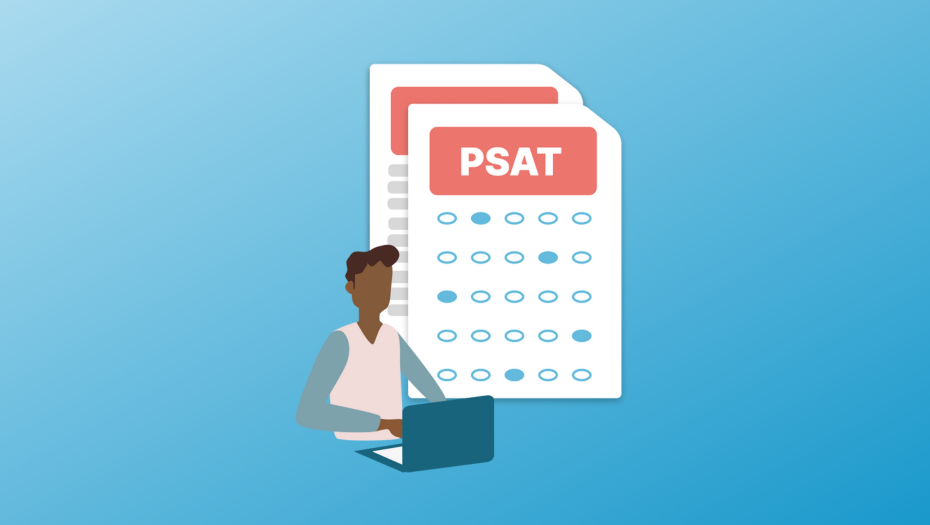3 min read
Strategies for Choosing Your High School Courses [Podcast Recap]
This article is a recap of an episode from our podcast: Course Selection: Strategies for Choosing Your High School Courses. Are you a junior or...
Scoir is free for your students and for you. We also offer Advanced Solutions to help you better guide your students.
Access resources in the areas of test prep, essay support, and financial aid to better navigate every part of the admissions process.
We offer a flat 50% discount for each student who receives free or reduced lunch in your school or district.
Enjoy Career Readiness Early Access for grades 6-8, built to help you guide students and track progress in the early years of career learnings and activities.

Career development (certifications, courses & curriculum) for changemakers.
Check out content and practical guides to help inform your enrollment strategies and programs.

This blog post was provided by Test Innovators, our test prep partner. You can learn more about Test Innovators on our partners page.
Chances are you’ve heard of the SAT, but what’s the deal with the PSAT? Does it matter? How is it different from the SAT?
In this post, we’ll answer your top questions about the PSAT:
The PSAT or “Preliminary SAT” is part of the digital SAT Suite of assessments. The PSAT is designed to help you understand your strengths and weaknesses as you plan for college and career success.
There are actually three different versions of the PSAT:
The PSAT/NMSQT (“National Merit Scholarship Qualifying Test”) is given to 11th graders in the fall. This test is used to qualify students for the National Merit program. When people talk about the PSAT, this is likely the version they’re referring to
The PSAT 10 is identical to the PSAT/NMSQT— it has the same format and content. It’s given to 10th graders in the spring. Some schools allow their 10th graders to take the PSAT/NMSQT in the fall instead of the PSAT 10 in the spring. It’s the same test, but 10th graders won’t be considered for National Merit
PSAT 8/9 is for 8th and 9th graders. The test has the same format as the PSAT/NMSQT and PSAT 10. The difference is that the content is geared to a grade-appropriate level
Taking the PSAT is a great way to get to know the SAT. You’ll get a feel for the timing and format of the SAT, and you’ll learn what kinds of questions to expect. The PSAT can also help you know what to improve before you take the SAT.
However, even if you don’t plan to take the SAT, the PSAT is still a great opportunity to develop your test-taking skills and confidence in a low-stakes environment. Experience with standardized tests like the PSAT will continue to serve you in college and beyond.
Taking both the PSAT and SAT allows you to see how you’ve improved over time. Concrete evidence of progress boosts confidence and can be a powerful motivator to continue your hard work and dedication.
Students who take the PSAT/NMSQT in 11th grade and achieve a top score may qualify for the National Merit Scholarship Program, which can provide significant financial aid and merit scholarship opportunities for college.
Unlike the SAT, the PSAT is not used in college admissions. Instead, the PSAT provides valuable test practice and an objective benchmark for growth. Students who take the PSAT/NMSQT in grade 11 are considered for the National Merit Scholarship Program. Learn more about the National Merit Scholarship Program here.
Otherwise, the SAT and PSAT are very similar. The test structure is identical, and the content is pretty much the same, just slightly easier on the PSAT. Additionally, the PSAT Math section has more problem solving and data analysis questions and fewer advanced math questions than the SAT Math section.
To reflect the slightly easier level, the PSAT/NMSQT and PSAT 10 are scored on a scale of 320-1520, while the SAT is scored on a scale of 400-1600. See How is the PSAT Scored? for more information.
The structure of the PSAT is the same as the SAT. It’s 2 hours and 14 minutes long with 98 questions. Like the SAT, the PSAT is now a digital test.
There are two sections, each divided into two modules:
You won’t get a break between modules, but you will get a break between the Reading and Writing section and the Math section.
The Reading and Writing section consists of short passages (25–150 words) with one multiple choice question per passage. Some questions have two short passages (cross-text connections), and some contain informational tables and graphs (command of evidence: quantitative).
The modules are organized by question type so that questions testing similar skills are grouped together.
Here is a breakdown of the content domains and question types that appear on the PSAT/NMSQT and PSAT 10 Reading and Writing section:
The Math section consists of multiple-choice questions (75%) and student-produced response questions (25%). The modules are organized by question difficulty, so you’ll see easier questions at the beginning and harder questions at the end.
You can use a calculator for the entire Math section. The Desmos graphing calculator is built into the testing application. You can also choose to bring your own approved calculator.
Here is a breakdown of the content domains and testing points that appear on the PSAT/NMSQT and PSAT 10 Math section:
Yes, the PSAT is a computer adaptive test, just like the digital SAT. In each section, your performance on Module 1 will determine whether you get an easier or harder Module 2.

If you answer a lot of questions correctly on Module 1, Module 2 will be harder. Conversely, if you answer fewer questions correctly on Module 1, Module 2 will be easier. The adaptive structure means that the test can be significantly shorter than a traditional paper test while still accurately evaluating your ability level.
Yes, you can answer the questions in a module in any order. You can skip ahead to questions and go back to questions later. You can even work backwards if you want. However, you must stay in the current module. You cannot move on to the next module early, and you cannot go back to an earlier module.
The PSAT is now a computer adaptive test, which means that scoring is a lot more complicated than it used to be. On the old paper test, your score depended on how many questions you answered correctly. On the new adaptive test, your score depends not only on how many questions you answered correctly, but also on which questions you answered correctly. The weight of each question depends on the characteristics (like the difficulty level) of the question. So, getting a hard question right will increase your score more than getting a similar easy question right.
The SAT suite of assessments (PSAT 8/9, PSAT 10, PSAT/NMSQT, and SAT) are vertically scaled. This means that if a student were to take PSAT and the SAT on the same day, they would theoretically get the same score. In other words, a 1050 on the PSAT 8/9 indicates the same skill level as a 1050 on the SAT.
Here are the score ranges for each of the tests in the digital SAT suite:
The vertical scaling provides consistency that lets you measure your progress over time.
The PSAT is primarily used for practice and self-assessment. For most students, it’s less about “getting a good score” and more about understanding where you are and what work you need to do to reach your goals. The test will show you if you’re meeting grade-level benchmarks for college and career readiness. If not, you’ll be able to see the areas that need some extra attention.
If you’re aiming for National Merit, however, your scores are important. Preliminary qualification for the program is determined by the National Merit Selection Index Score, which is calculated by adding twice the Reading and Writing Section score to the Math Section score and then dividing the sum by 10.
National Merit Selection Index Score = [(Reading and Writing score x 2) + Math score] / 10
For more information, including details on qualifications and specific scholarship opportunities, please visit the National Merit Scholarship Corporation’s website.
If you’d like to be considered for the National Merit Scholarship program, you’ll need to take the PSAT/NMSQT in October of your junior year. Your school can choose to offer it during the school day or on a designated Saturday. Talk to your counselor about the options at your school.
Some schools also offer the PSAT/NMSQT to sophomores in October (though they won’t be considered for National Merit), while other schools offer the PSAT 10 to their sophomores in March or April.
If your school offers the PSAT 8/9, you’ll take the test in the fall (October) or in the spring (March or April) of 8th or 9th grade.
Students can only take the PSAT once per school year.
You’ll take the PSAT at school, so talk to your counselor to learn when you can take the PSAT and how to register.
If you’re homeschooled, you can request to take the PSAT at a participating school by reaching out to the school or district directly. Visit College Board’s website to learn more.
It’s likely that the PSAT will be your first experience with a computer adaptive test, so it’s a good idea to take at least one practice test. This will give you a feel for the adaptive format and the types of questions that appear on the test.
To get to know the testing interface, download Bluebook, College Board’s testing application. Bluebook has two practice tests for the PSAT 8/9 and two practice tests for the PSAT/NMSQT and PSAT 10.
If you’d like additional materials, Test Innovators has a full-length, adaptive PSAT practice and 10 full-length, adaptive SAT practice tests, as well as 1,400+ additional practice questions. You can think of your PSAT practice as part of your overall SAT preparation, so don't be afraid to use the SAT materials as you prepare for the PSAT.
To learn more about preparing for standardized tests, check out The Most Effective Way to Prepare for the ACT, SAT, and PSAT.

Sara Laszlo is a Marketing Manager at Test Innovators.
![Strategies for Choosing Your High School Courses [Podcast Recap]](https://www.scoir.com/hubfs/Course%20Selection%20Strategies%20for%20Choosing%20Your%20High%20School%20Courses%20%5BPodcast%20Recap%5D.png)
3 min read
This article is a recap of an episode from our podcast: Course Selection: Strategies for Choosing Your High School Courses. Are you a junior or...

15 min read
Hey there, counselors! 👋

7 min read
As part of your college application process, many colleges will require an admissions essay. This is your opportunity to highlight your strengths,...